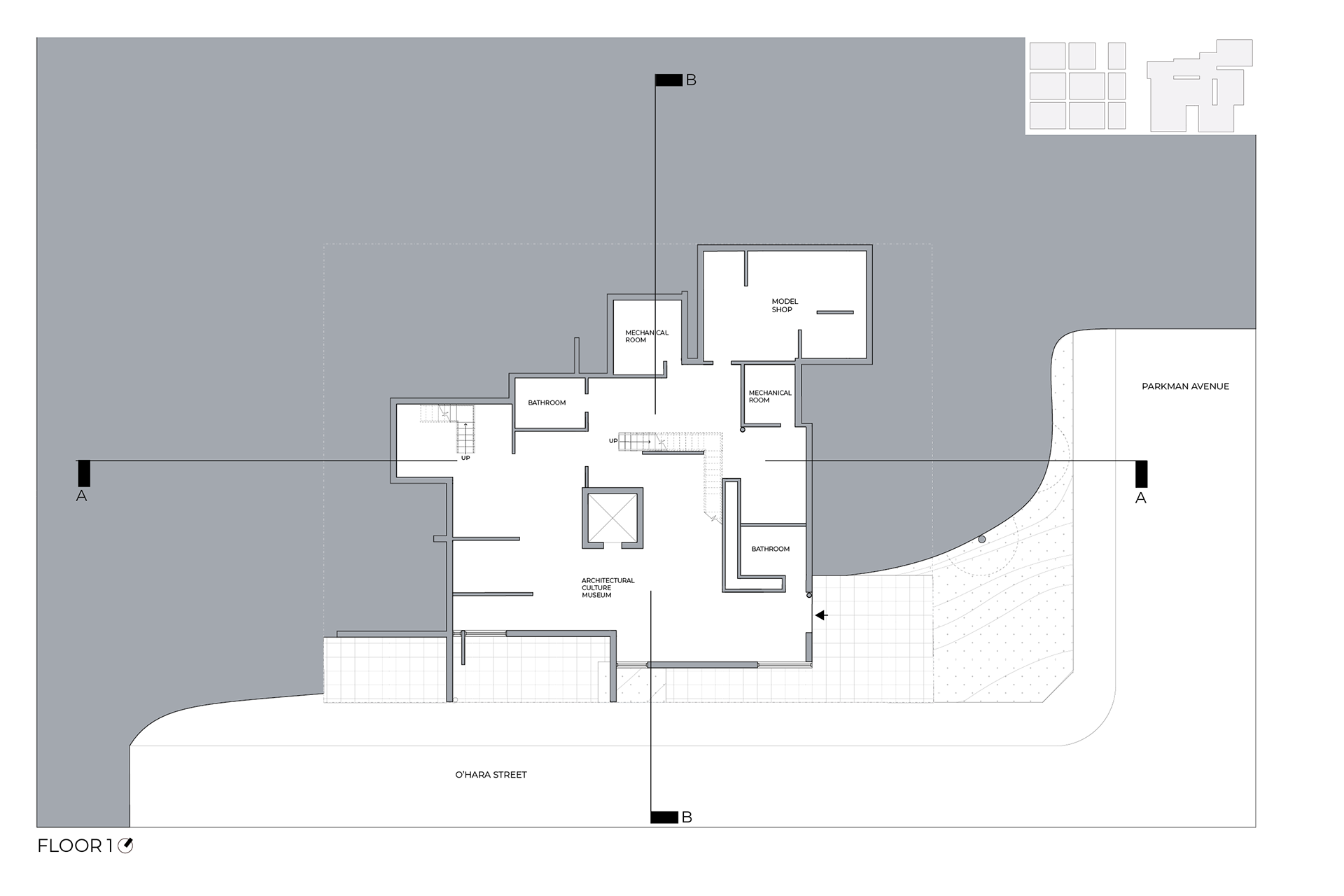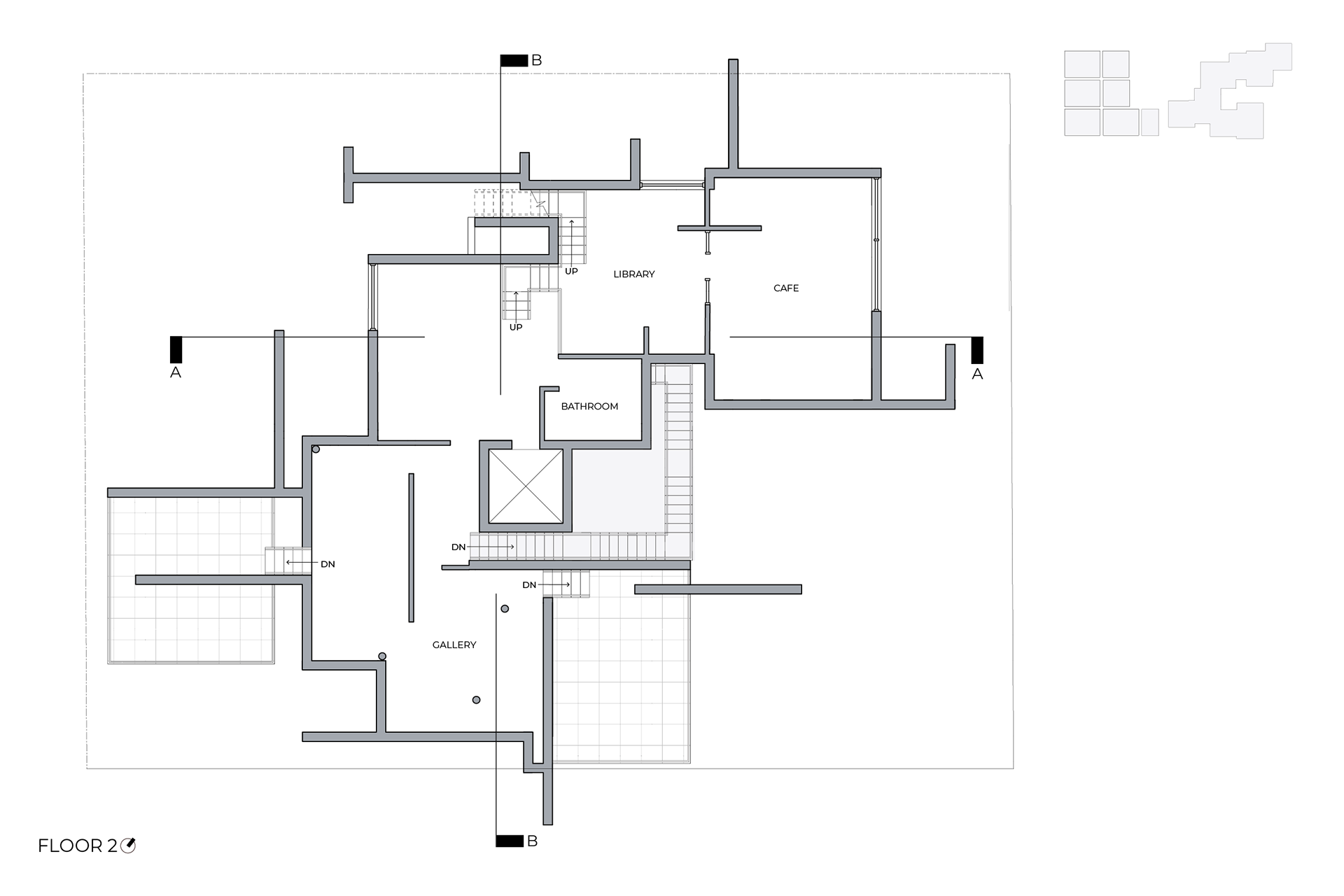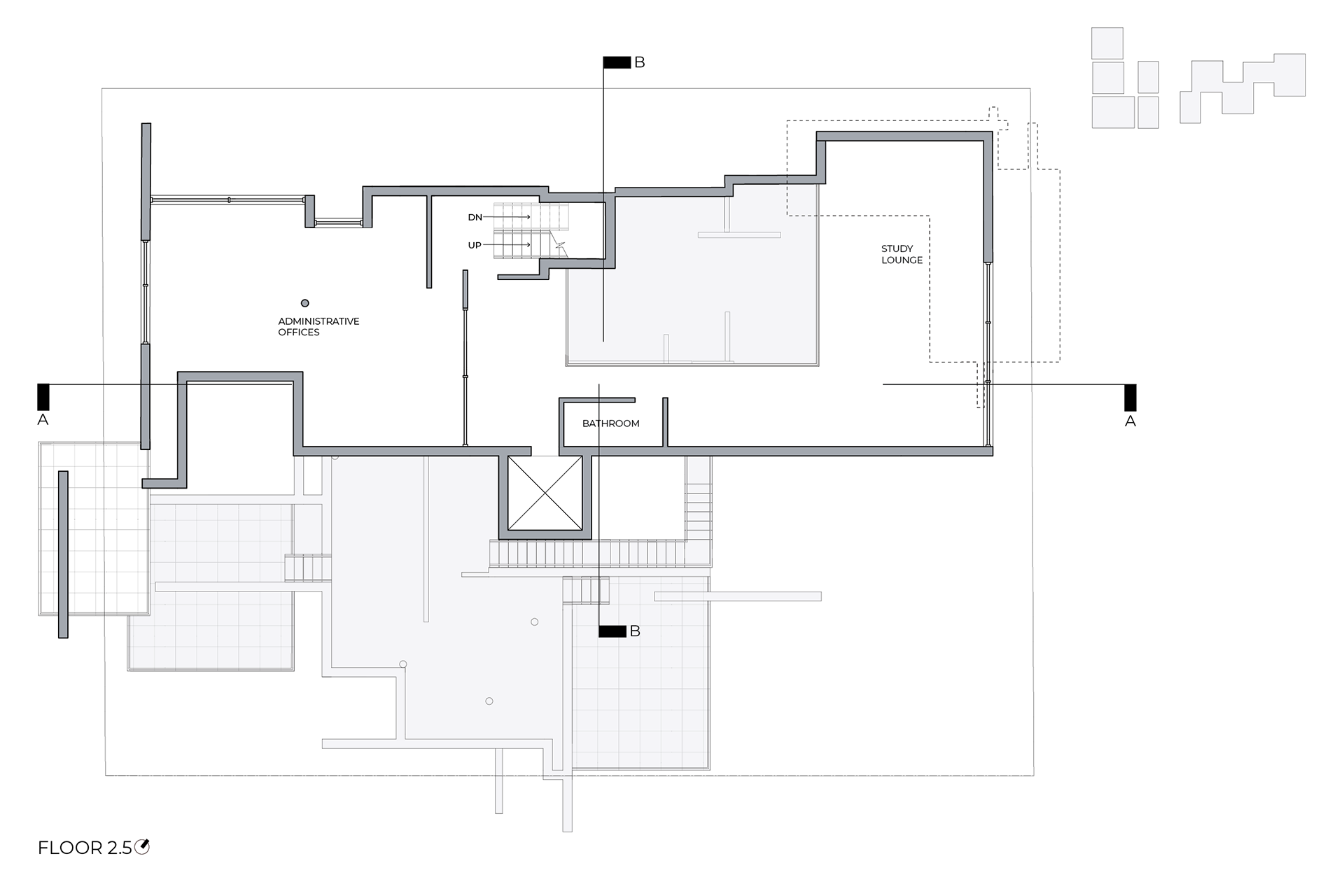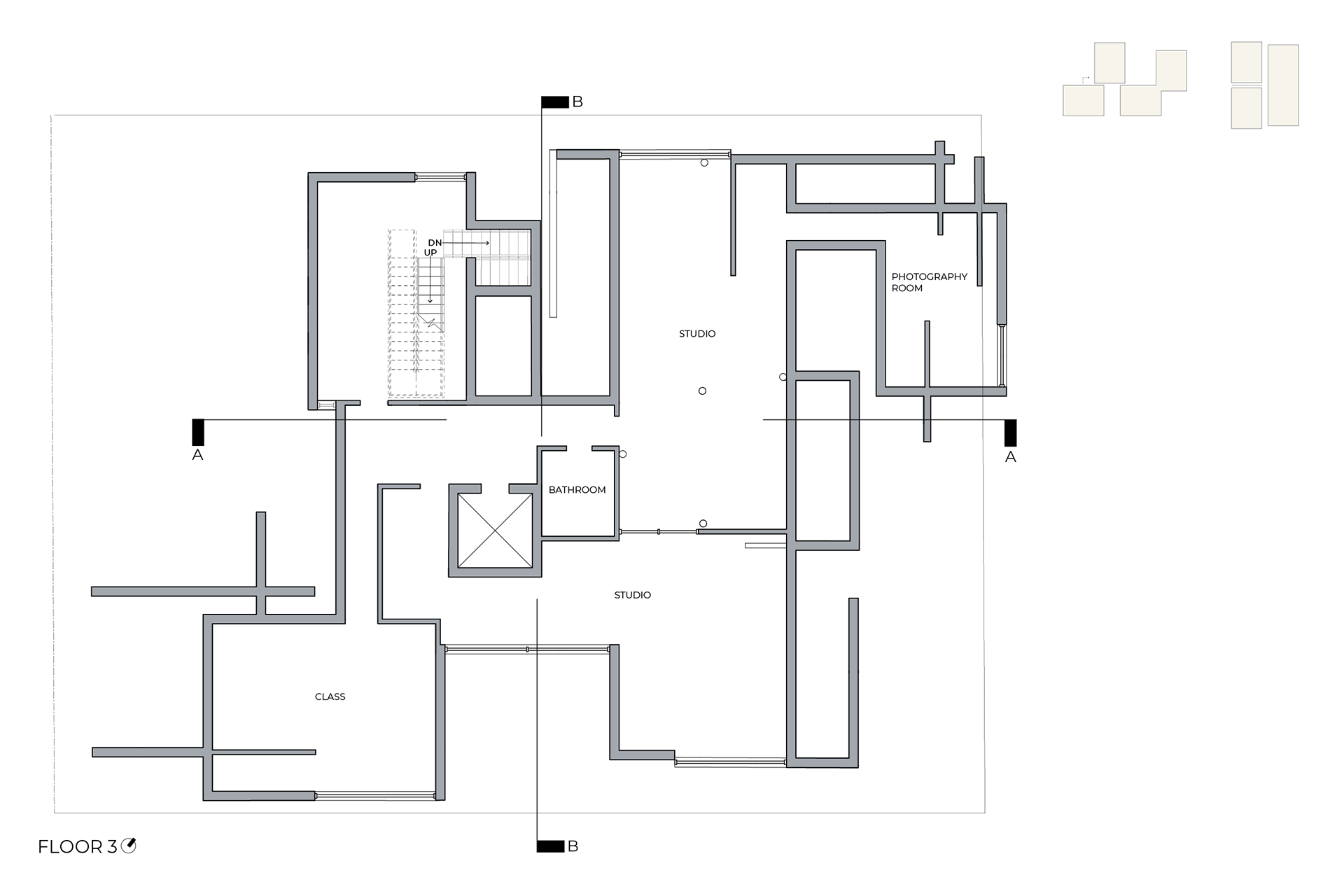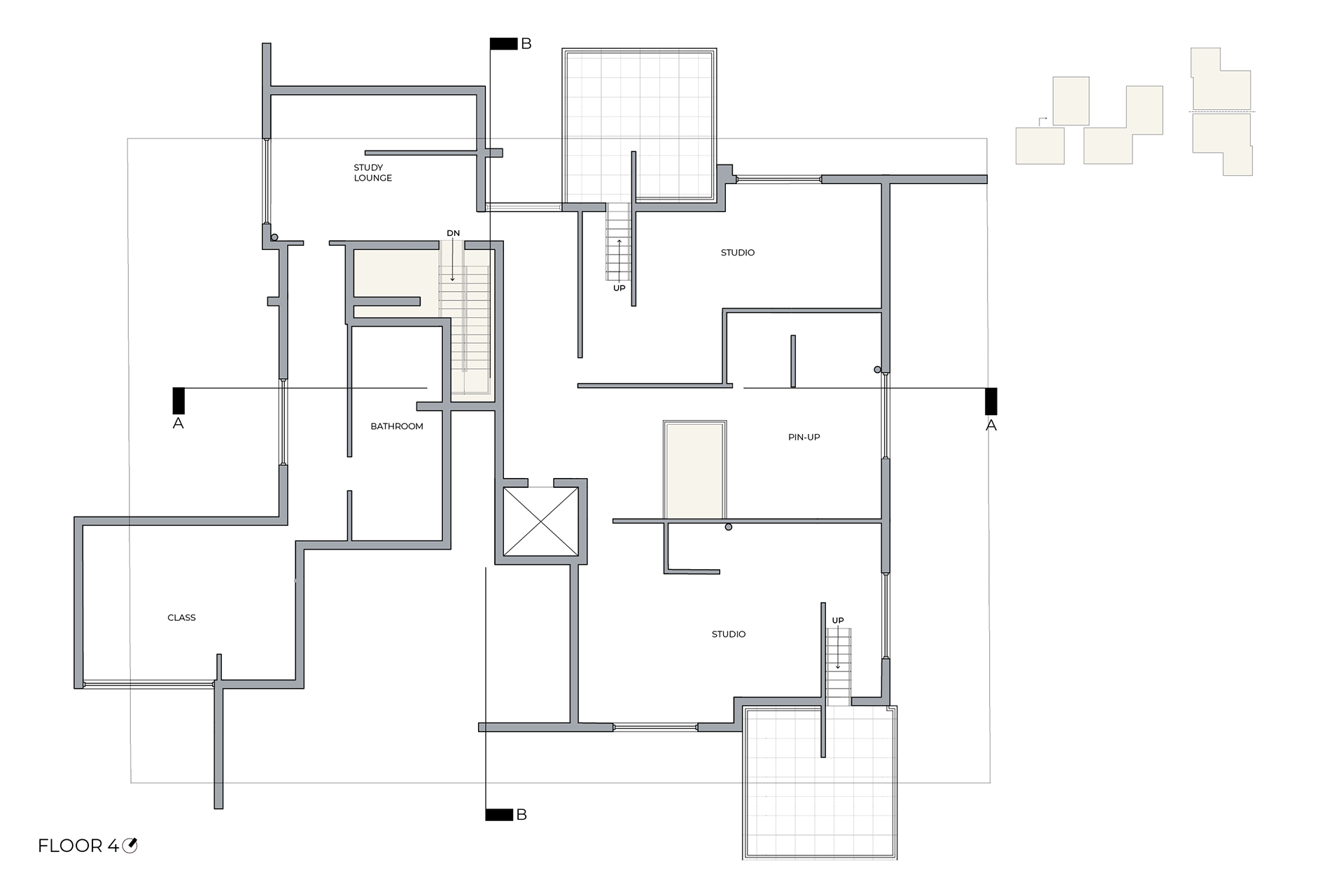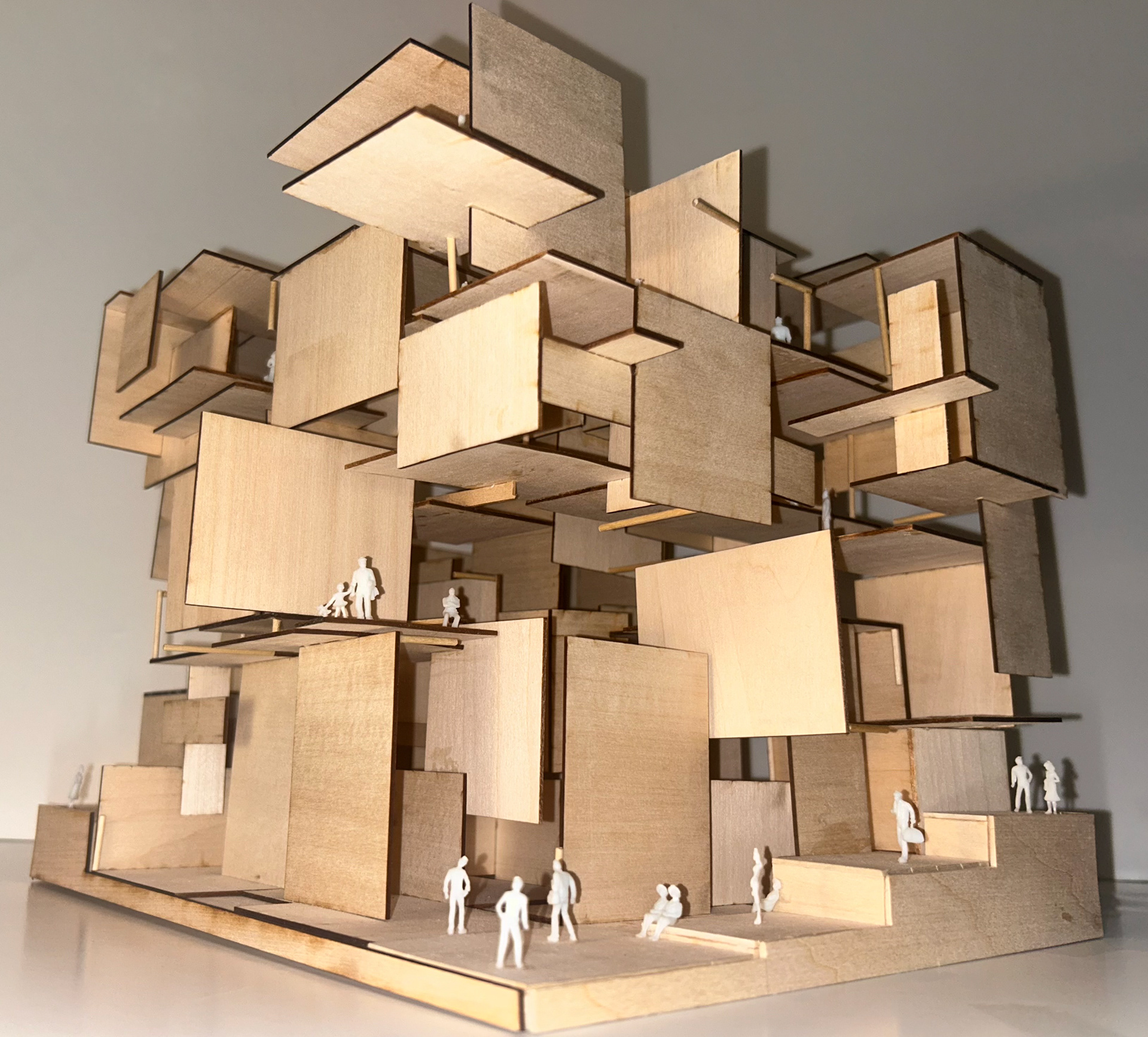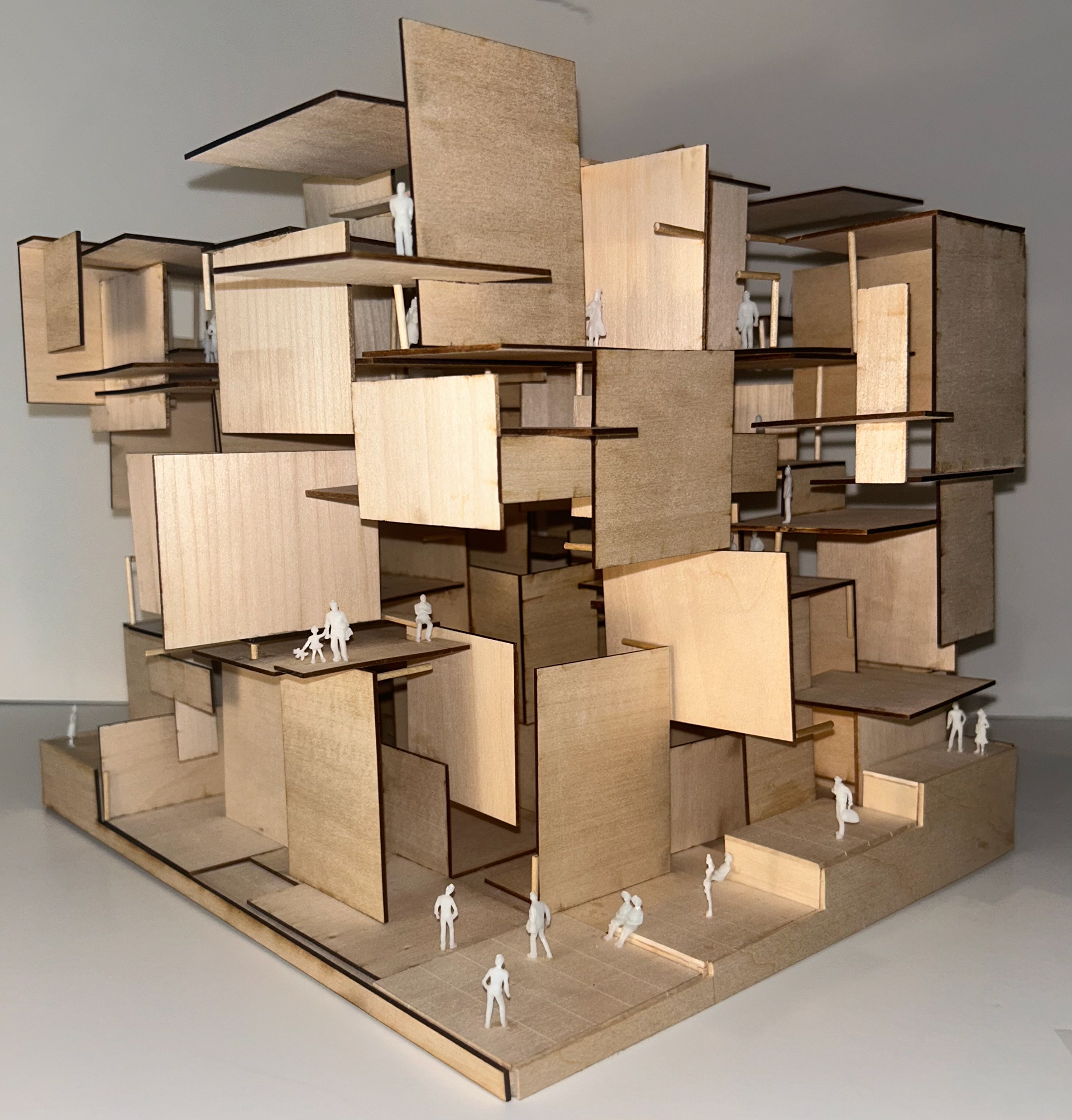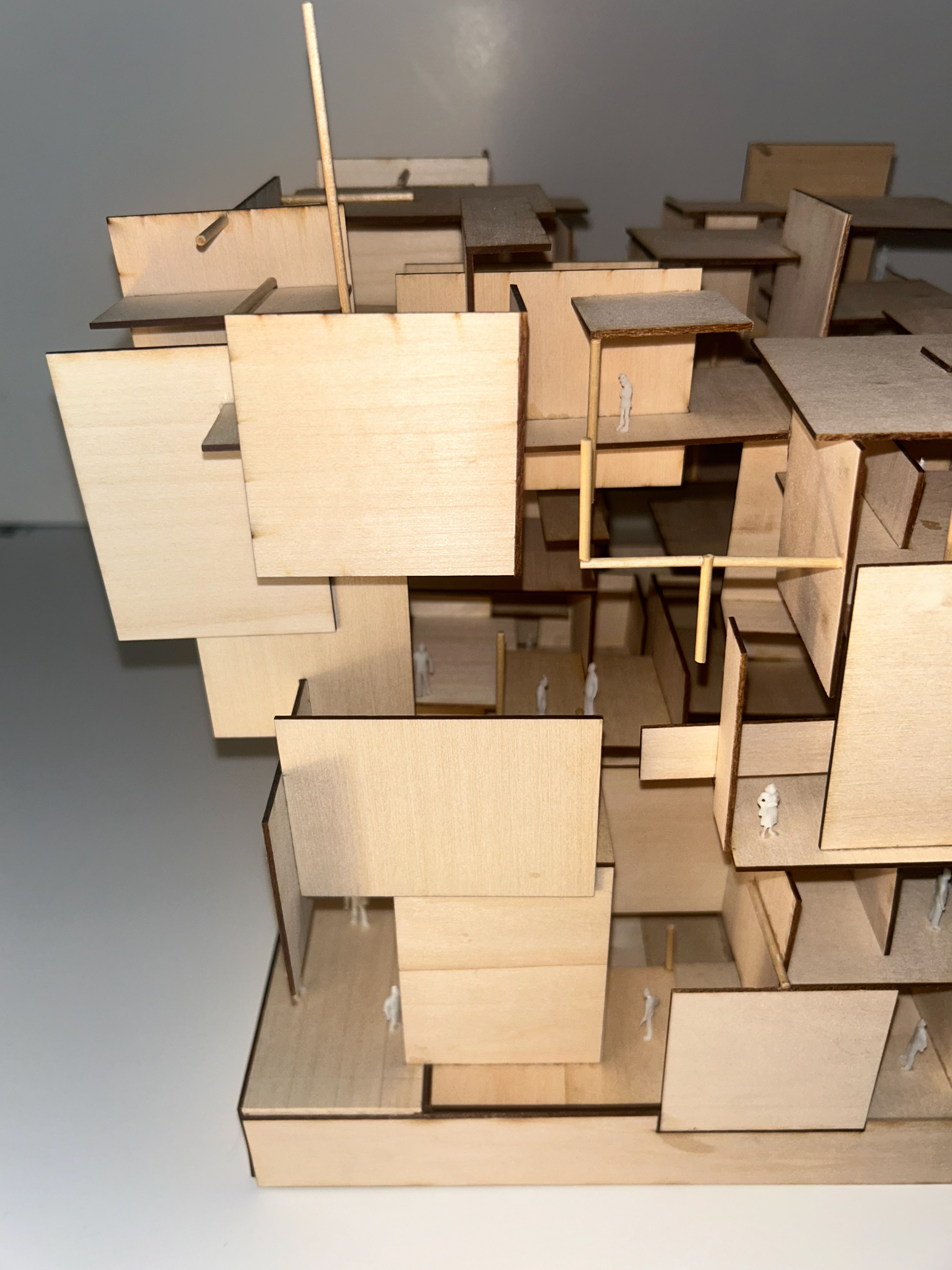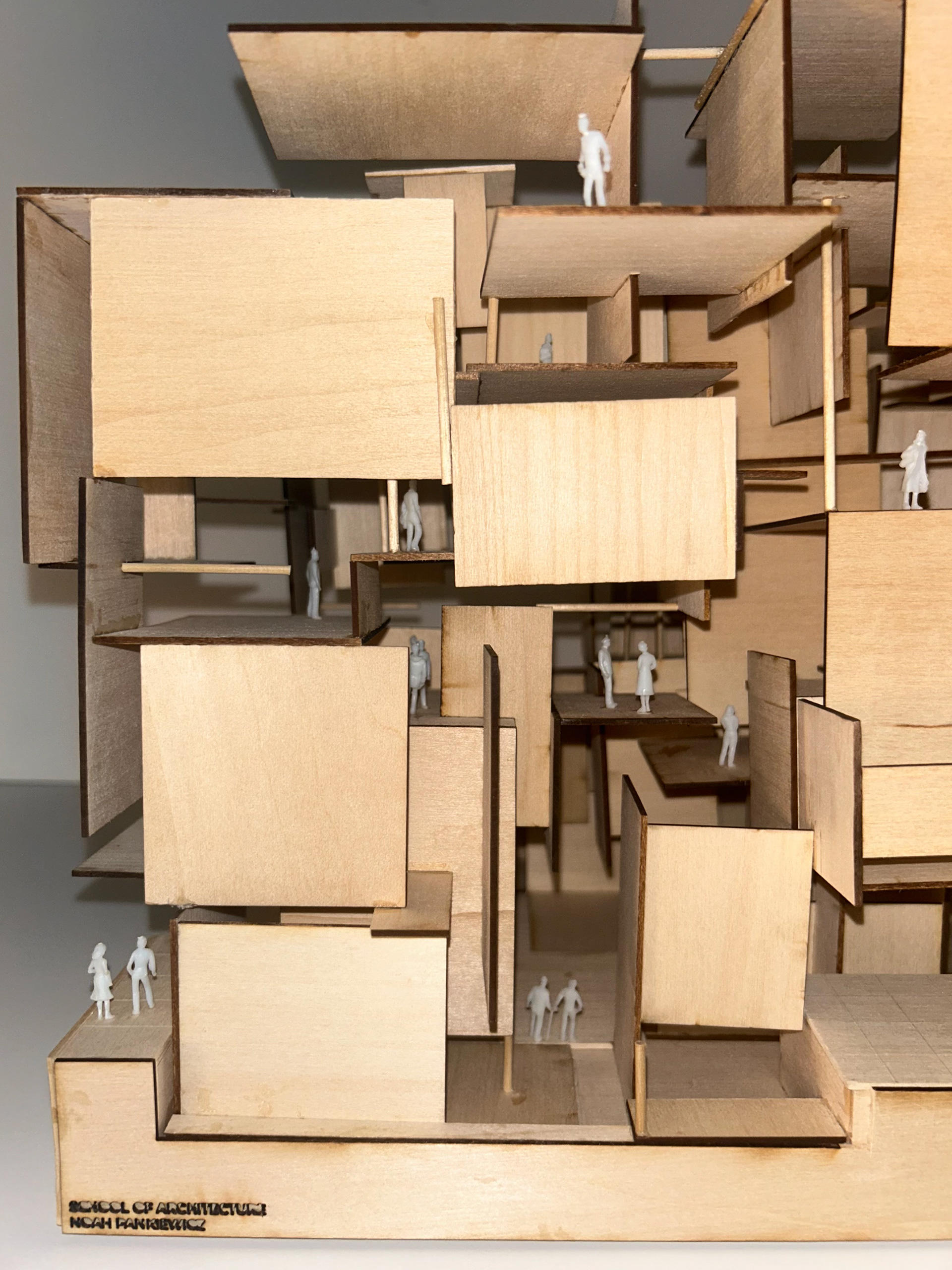This proposal for the University of Pittsburgh Architecture Building was designed with a system-based approach. First, a sculptural model was created using a system to represent the concept verb “rebel”. The system consists of a tessellated pattern of few components to establish a uniform order. Also, dense pockets of the remaining components that disrupt the tessellation to represent a rebellion. This system was then applied to architectural design.
_______________________________________
SYSTEM
CONCEPT VERB: REBEL
The process involved defining lines, volumes, and planes as elements. Then, making components by combining two elements. Later, modifying the components through deconstruction and, lastly, combining components through common elements and previously created connection rules to create a system model that represents a concept verb.
_______________________________________
ARCHITECTURE
The programming was motivated by the idea that architecture students have much to gain from interactions with students of other disciplines and, in turn, these other students can gain an interest in architecture. An axis of publicness and general knowledge was created with architectural education concentrated on the upper floors and architectural support spaces and resources surrounding. The goal was to create an ecosystem of students across disciplines.
The system of tessellation and rebellion was applied to this new programming concept. The core of the architectural education floors is made up of a tessellation of two-sub systems whereas the shared floors are meticulously arranged to accommodate the program. This is because the institutional education spaces require efficiency and schedule, so they are designated as the "establishment" in the system. The lower floors, where interaction is being forged, need to rebel against this system and be freed from its uniformity and certainty. So, they are designated as the "rebellion".
_______________________________________
